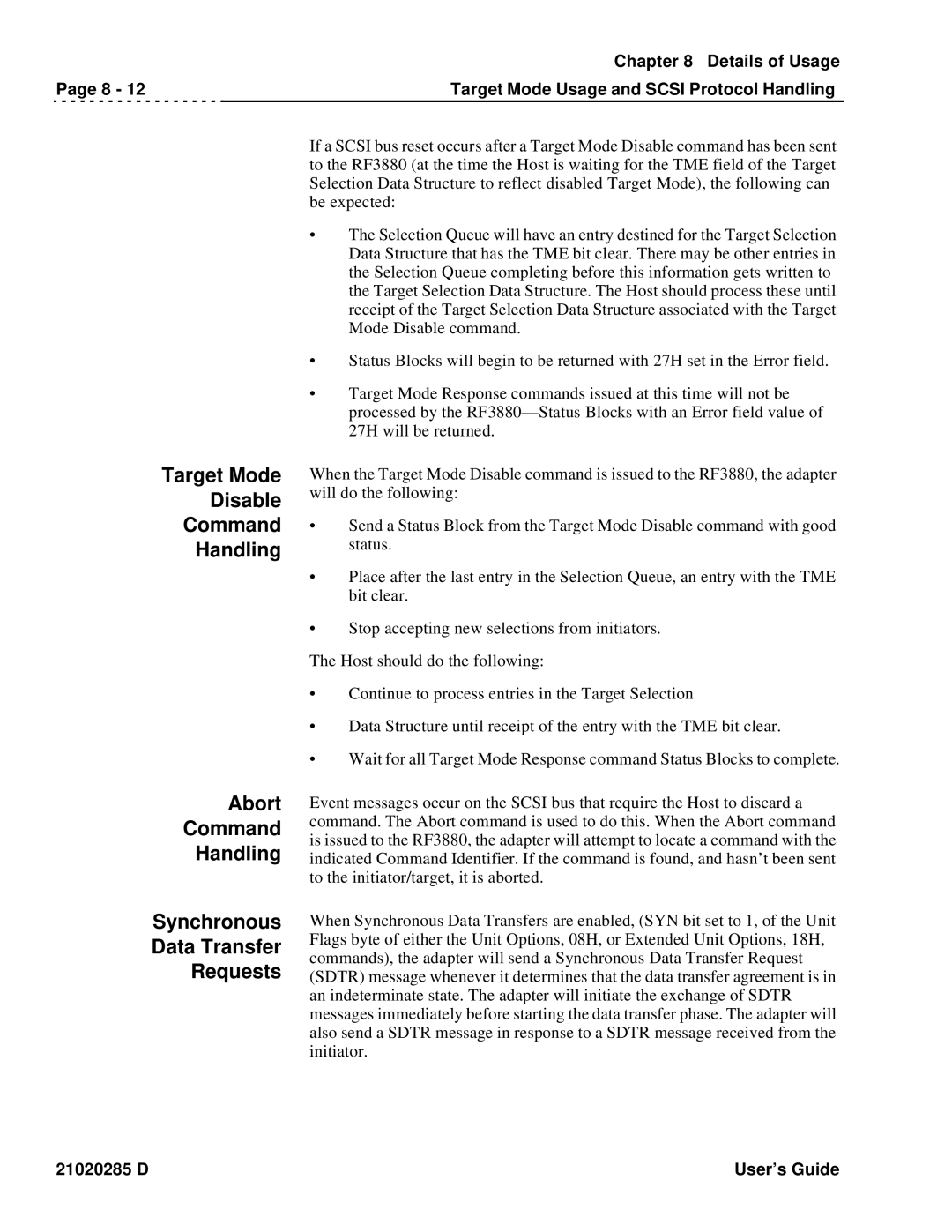Chapter 8 Details of Usage
Page 8 - 12 |
| Target Mode Usage and SCSI Protocol Handling |
Target Mode
Disable
Command
Handling
If a SCSI bus reset occurs after a Target Mode Disable command has been sent to the RF3880 (at the time the Host is waiting for the TME field of the Target Selection Data Structure to reflect disabled Target Mode), the following can be expected:
•The Selection Queue will have an entry destined for the Target Selection Data Structure that has the TME bit clear. There may be other entries in the Selection Queue completing before this information gets written to the Target Selection Data Structure. The Host should process these until receipt of the Target Selection Data Structure associated with the Target Mode Disable command.
•Status Blocks will begin to be returned with 27H set in the Error field.
•Target Mode Response commands issued at this time will not be processed by the
When the Target Mode Disable command is issued to the RF3880, the adapter will do the following:
•Send a Status Block from the Target Mode Disable command with good status.
•Place after the last entry in the Selection Queue, an entry with the TME bit clear.
•Stop accepting new selections from initiators.
The Host should do the following:
•Continue to process entries in the Target Selection
•Data Structure until receipt of the entry with the TME bit clear.
•Wait for all Target Mode Response command Status Blocks to complete.
Abort
Command
Handling
Synchronous
Data Transfer
Requests
Event messages occur on the SCSI bus that require the Host to discard a command. The Abort command is used to do this. When the Abort command is issued to the RF3880, the adapter will attempt to locate a command with the indicated Command Identifier. If the command is found, and hasn’t been sent to the initiator/target, it is aborted.
When Synchronous Data Transfers are enabled, (SYN bit set to 1, of the Unit Flags byte of either the Unit Options, 08H, or Extended Unit Options, 18H, commands), the adapter will send a Synchronous Data Transfer Request (SDTR) message whenever it determines that the data transfer agreement is in an indeterminate state. The adapter will initiate the exchange of SDTR messages immediately before starting the data transfer phase. The adapter will also send a SDTR message in response to a SDTR message received from the initiator.
21020285 D | User’s Guide |
